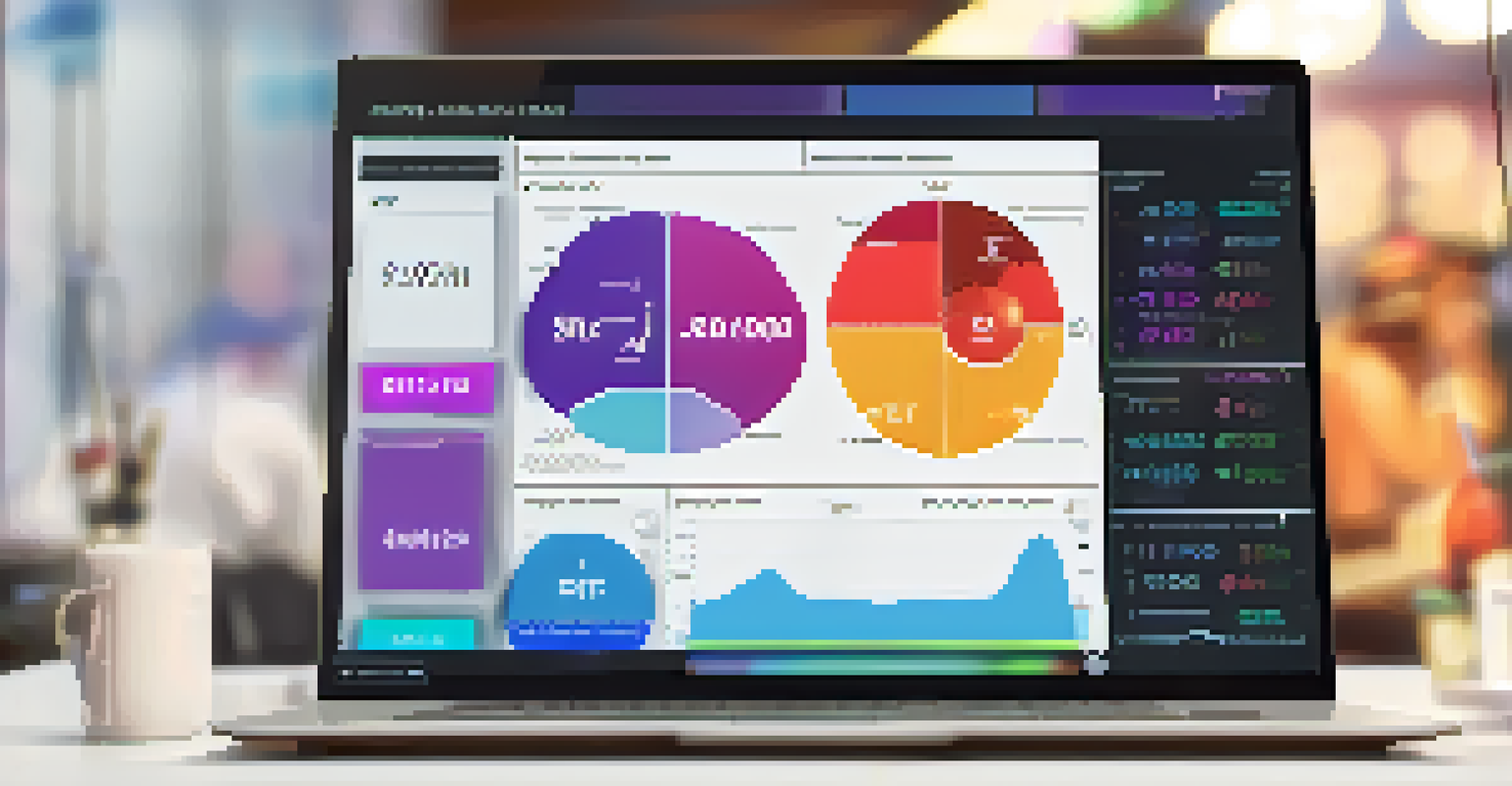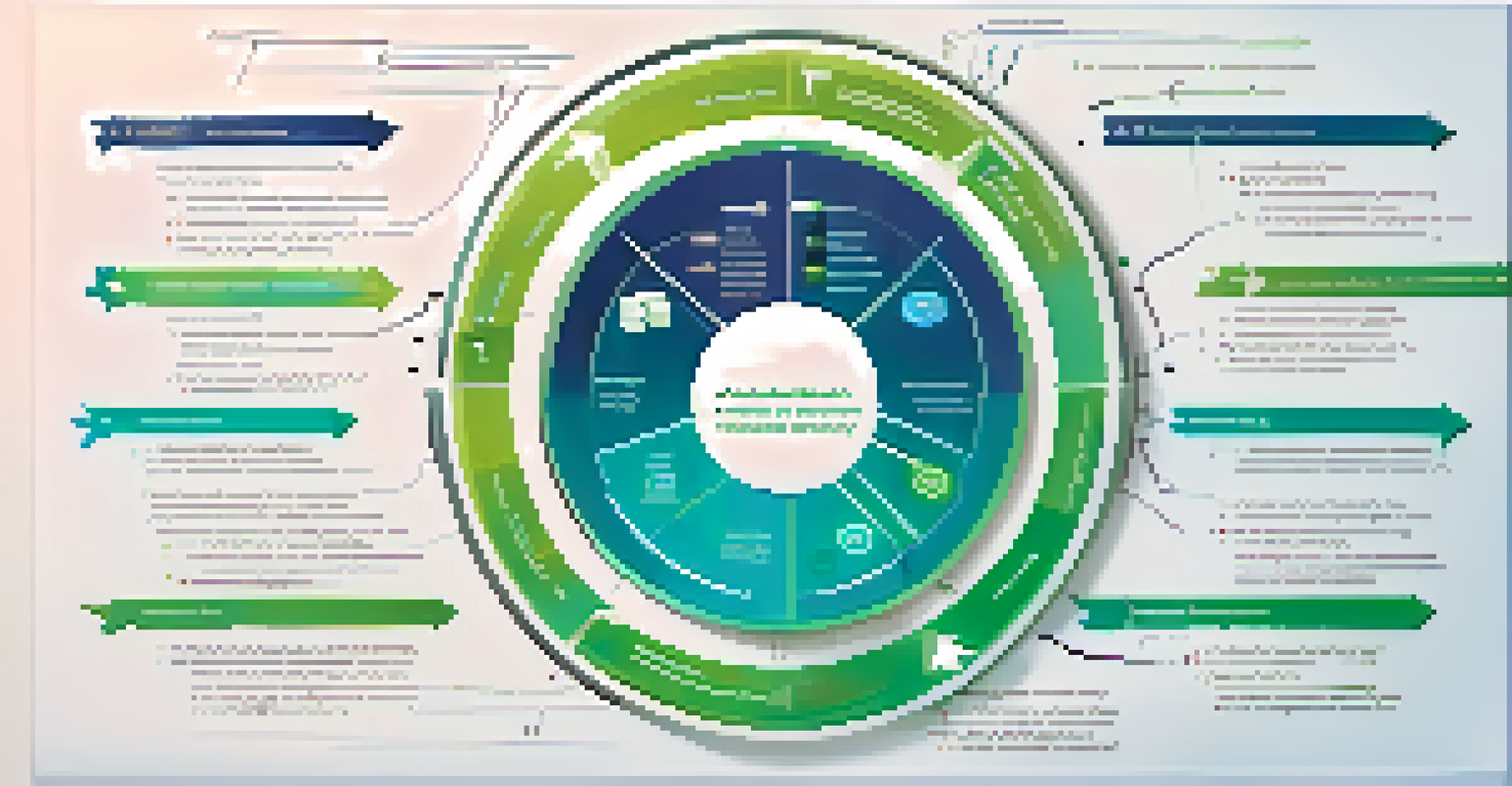Key Metrics to Measure DevOps Performance Effectively

Understanding DevOps Metrics and Their Importance
DevOps metrics are essential tools that help teams evaluate their performance and identify areas for improvement. They provide insights into various aspects of the software development lifecycle, allowing organizations to align their processes with business goals. By focusing on the right metrics, teams can foster a culture of continuous improvement and innovation.
Without data, you're just another person with an opinion.
The importance of these metrics cannot be overstated. They enable teams to track progress over time, making it easier to spot trends and anomalies in performance. Furthermore, having concrete data helps facilitate communication between development and operations, creating a more cohesive working environment.
Ultimately, understanding and measuring the right metrics is crucial for achieving the intended outcomes of a DevOps transformation. By establishing a clear connection between metrics and business objectives, organizations can drive better results and enhance their overall performance.
Deployment Frequency: Measuring Release Velocity
Deployment frequency is a key metric that reflects how often new code is released to production. A higher frequency indicates a more agile and responsive development process, allowing teams to deliver value to customers quickly. This metric is particularly important in today’s fast-paced tech landscape, where user expectations are continually evolving.

To effectively measure deployment frequency, teams should track how many deployments occur over a specified period, such as weekly or monthly. This data can provide insights into how well the team is managing their workflow and can highlight areas where bottlenecks may occur. Analyzing this metric can help teams adjust their processes for quicker delivery.
Key Metrics Drive DevOps Success
Focusing on essential metrics like deployment frequency and customer satisfaction fosters continuous improvement and aligns development efforts with business goals.
Additionally, focusing on deployment frequency encourages a mindset of continuous delivery, where updates and improvements are made regularly. This not only enhances customer satisfaction but also reduces the pressure of large releases, ultimately leading to a more sustainable development pace.
Change Lead Time: Speeding Up Development Cycles
Change lead time measures the time it takes for a code change to go from development to deployment. This metric is crucial because it reflects the efficiency of the entire development pipeline. A shorter lead time means that teams can respond to market changes and customer feedback more effectively.
What gets measured gets managed.
To track change lead time, teams should monitor the duration from when code is committed to when it is deployed in production. By analyzing this data, organizations can identify delays and streamline their processes, ensuring that valuable features and fixes reach users faster. Reducing lead time often involves automating aspects of the workflow and improving collaboration among team members.
Ultimately, a focus on change lead time cultivates a proactive approach to development, encouraging teams to continuously seek ways to optimize their processes. This not only benefits the development team but also enhances the overall user experience by delivering timely updates.
Change Failure Rate: Enhancing Stability and Quality
The change failure rate measures the percentage of changes that result in failures or incidents in production. This metric is important because it helps teams assess the quality of their deployments and identify areas that need improvement. A lower change failure rate indicates a more stable and reliable software product.
To calculate the change failure rate, divide the number of failed changes by the total number of changes made in a specific period. By monitoring this metric, teams can gain insights into their testing and deployment processes, allowing them to make informed decisions about future changes. Implementing robust testing practices can significantly reduce this rate.
Streamlining Development Processes
Metrics such as change lead time and change failure rate help identify bottlenecks and enhance the overall efficiency of the development pipeline.
Focusing on the change failure rate encourages teams to prioritize quality alongside speed. By fostering a culture that values thorough testing and feedback, organizations can minimize disruptions and enhance user trust in their systems.
Mean Time to Recovery: Quick Incident Response
Mean time to recovery (MTTR) is a vital metric that measures the average time it takes to restore service after a failure. This metric is crucial for understanding how effectively a team can respond to incidents, ensuring minimal disruption to users. A lower MTTR indicates a more resilient system and a responsive team.
To calculate MTTR, teams should log the total downtime due to incidents and divide it by the number of incidents over a specific period. This analysis provides insights into the team's incident management processes and highlights opportunities for improvement. Investing in training and tools can help reduce recovery time.
By focusing on mean time to recovery, organizations can cultivate a culture of preparedness and resilience. This not only improves user satisfaction but also reinforces the value of proactive monitoring and incident management strategies.
Customer Satisfaction: The Ultimate Measure of Success
Customer satisfaction is arguably the most important metric for any organization, including those practicing DevOps. It reflects how well a product meets user needs and expectations, which ultimately drives business success. High customer satisfaction often leads to increased loyalty and positive word-of-mouth.
To measure customer satisfaction effectively, teams can use surveys, feedback forms, or Net Promoter Scores (NPS). By regularly collecting and analyzing this feedback, organizations can gain valuable insights into user experience and identify areas for improvement. Understanding customer needs helps teams prioritize features and enhancements.
Customer Satisfaction is Paramount
Regularly measuring customer satisfaction ensures that teams prioritize user needs, leading to better products and long-term loyalty.
Focusing on customer satisfaction encourages teams to adopt a user-centric mindset, aligning development efforts with real-world needs. This not only leads to better products but also strengthens the relationship between organizations and their users, fostering long-term success.
Cost Efficiency: Balancing Quality and Budget
Cost efficiency is a crucial metric that measures how well teams manage their resources while delivering quality products. In a competitive market, organizations must find ways to optimize their processes without compromising quality, making this metric essential for sustained success. A focus on cost efficiency can lead to significant savings and improved profit margins.
To assess cost efficiency, teams should analyze their spending in relation to the outputs they produce. This includes evaluating development costs, infrastructure expenses, and any additional resources required. By understanding these costs, organizations can make informed decisions about where to invest for the best returns.

By prioritizing cost efficiency, organizations can ensure they are maximizing their resources while still delivering high-quality products. This not only helps in budgeting but also encourages teams to innovate and find creative solutions to challenges, ultimately benefiting the whole organization.
Conclusion: The Path to Continuous Improvement in DevOps
Measuring DevOps performance through key metrics is an essential practice for any organization looking to thrive in today's technology-driven landscape. By focusing on metrics such as deployment frequency, change lead time, and customer satisfaction, teams can drive continuous improvement and adapt to changing needs. These metrics provide a roadmap for success, guiding teams toward their goals.
As organizations evolve, so should their metrics and the way they evaluate performance. Continuous monitoring and adjustment of these metrics ensure that teams remain aligned with business objectives and user expectations. This adaptability is crucial for maintaining a competitive edge.
In conclusion, embracing a metrics-driven approach in DevOps not only enhances performance but also fosters a culture of collaboration and innovation. By prioritizing key metrics, organizations can set themselves on a path toward sustainable growth and success.